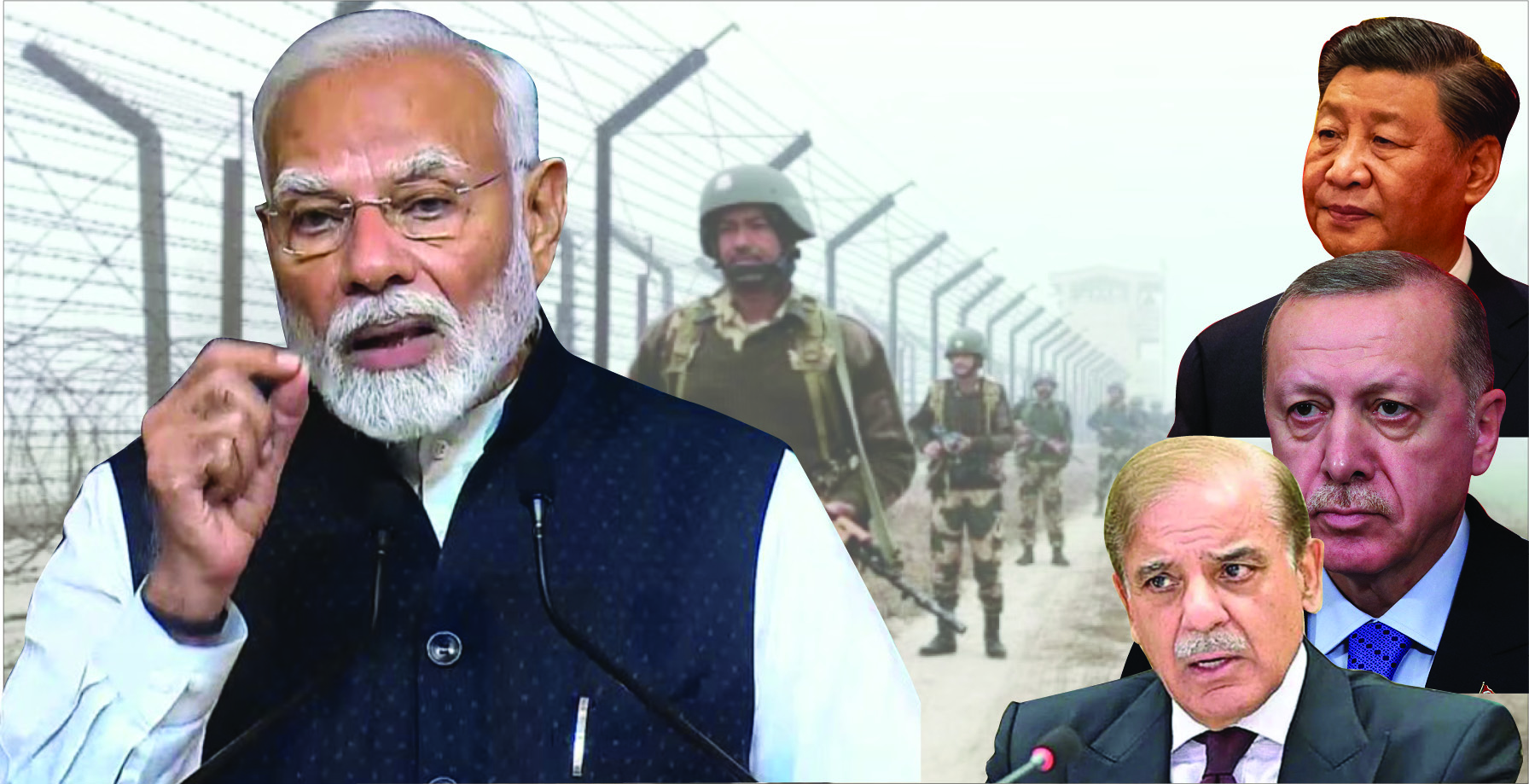Know thy foe
The India-Pakistan skirmish unveiled the enemy within and without, leaving important lessons for us to learn

When I was young, I’d often hear this phrase — learn from your mistakes. The missive here being that while there is a subtle acceptance that all of us make blunders, it’s our ability to learn from them, and not repeat them that makes us stand apart. The high tension conflict between India and Pakistan of the last couple of weeks is possibly the closest that we have come to war with our neighbour in the last 50 years. When two nuclear powers inch towards full-blown military action, staying calm is hardly an option. Fortunately, even as India pummelled Pakistan with its every attack while enduring some damage of its own, a ceasefire was declared. Make no mistake that this is but a nebulous agreement that stands to break if both sides don’t resolve matters across the table. The agreement remains precarious if Pakistan violates the ceasefire and if it continues to harbour, train, and nurture anti-Indian terror elements on its soil. As both nations try to work things out, there is also US President Donald Trump who demands credit for brokering the peace and has also volunteered to help find a solution to Kashmir. India hasn’t asked him.
Suffice to say that there’s lots happening in the region, some of which are beyond our control. However, the unravelling of the war-like scenario highlighted many weaknesses, loopholes, instances of naivete, and incompetence on our side. We must draw our lessons and learn quickly from them, so that we don’t make those same errors in judgement again. Here’s what we got right — after the April 22 Pahalgam terror attack, the Indian government didn’t lose its head. Dramatic rhetoric and chest-thumping was kept to a minimum. Quietly, we planned meticulously and speedily and took the enemy by surprise. Vengeance was imminent, it was only a matter of when. Our armed forces are the pride of our nation — their dexterous handling of weapons, the display of superior warfare, the dignified press briefings — we, as citizens, can only give thanks and express our gratitude to our security forces who protect us every day.
Now let’s shine a light on what we got wrong and let’s identify our foes — both the enemy within and that without. The greatest cause of shame and embarrassment came from certain sections of the Indian media. Soon after Operation Sindoor, the Pakistan Telecommunications Authority (PTA) suddenly lifted its ban on X (erstwhile Twitter) in Pakistan. The open access meant that scores of X accounts, some fake and posing as Indians, unleashed a misinformation campaign on the social media platform. While vanguards of fact-checking such as Muhammed Zubair through the night trounced the accounts with verified and credible information, a portion of TV media became the forerunners of fake and unverified news. From India storming Islamabad to arresting Pakistan Prime Minister — bizarre claims and utter lies were peddled on certain television channels to garner TRPs. A vast segment of the Indian media has zero to no training in war-reporting. The fact that on most days some Indian news channels are prone to sensationalism and divisive propaganda aimed to brew communal tensions, should have prepared us for their mishandling of a highly sensitive situation like the India-Pakistan conflict. Lies and fake news created panic and presented a biased representation of the ground reality, while the irresponsible programming caused massive embarrassment and made us a laughing stock. Under the fog of war, for a day or so, it became impossible to discern fact from fiction. We were fighting both the misinformation war started by Pakistan while also having to debunk the fake news being peddled by our own media. Many journalists sacrificed ethics and journalistic tenets at the altar of TRPs as they failed to uphold the stature of the fourth pillar of democracy.
Meanwhile, the drug of war-mongering provided crass titillation to many. Of course, we laud our brave forces but we don’t send them on the frontline as sacrificial lambs. Neither can we forget the immense toll that war takes on the people living in border towns and villages and the massive cost of war on the country’s economy, and the carnage that it leaves behind. And yet we had those baying for blood and itching to fight Pakistan with guns, missiles, and drones. Most of them were obviously fighting shadow vitriolic wars from the comfy confines of their homes using phones and laptops. Should there ever be a war, when civilians are called to enlist — it’ll be interesting to see how many of our laptop warriors show up. A time of rising escalation, is the time to be resilient, courageous, and united, but also responsible, collected, and rational.
I think the most important lesson for India will be now to identify its friends, or as we can see now, the lack of it. After Operation Sindoor, India has found itself largely isolated with none of the superpowers batting on its side. The International Monetary Fund (IMF) went ahead and awarded a USD 1 billion loan to Pakistan under its Extended Fund Facility (EFF) in spite of India’s protests. While we abstained from voting to show our displeasure, no other nation backed us. Turkey, that’s for long been considered a friend to India, not only supplied over 350 drones to Pakistan but also allegedly sent military operatives to support it. Indian arsenal bettered both Turkish drones and Chinese missiles — but diplomatically India finds itself alone despite several overseas trips, overtures, and hugs from the Indian government in the past decade. It’s a time for us to recognise, assimilate, and course correct.
The writer is an author and media entrepreneur. Views expressed are personal



